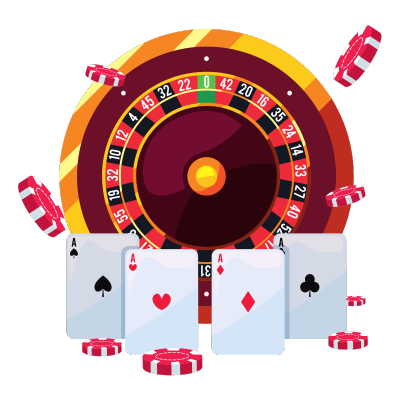Introduction
In the dynamic realm of online gambling, Return to Player (RTP) is a critical element shaping player experiences and satisfaction. RTP significantly impacts the fairness and long-term profitability of online casino games.
This blog will explore the concept of RTP in depth, covering its definition, calculation methods, volatility, regulatory standards, and why it has become a decisive factor for players selecting games. Grasping the importance of RTP is essential for industry professionals to strategically enhance game offerings and for players to make well-informed choices based on pay-out structures and odds.
The Mathematical Backbone of RTP

Casino games rely on complex algorithms to ensure randomness while adhering to the pre-set RTP. These algorithms, often powered by Random Number Generators (RNGs), determine the outcome of every spin, roll, or deal. The RNG ensures that each outcome is independent of previous ones, preserving fairness. However, the game’s mechanics including payout frequency and jackpot size are meticulously designed to align with the RTP value.
For example, high-RTP games might feature frequent small wins, while low-RTP games may entice players with the promise of larger but less frequent payouts. This balance is key to maintaining player interest while ensuring the casino remains profitable.
How RTP Shapes Game Design

Casino game developers meticulously design games to match their target RTP, which directly influences game mechanics in several ways:
1. Payout Structures
The payout structure of a game—including the size and frequency of winnings—is directly tied to its RTP. Games with a high RTP often provide consistent small payouts, creating a sense of regular rewards. Conversely, games with a lower RTP might compensate players with the allure of massive jackpots, albeit at longer intervals.
2. Volatility and RTP
Volatility, or variance, is another crucial factor intertwined with RTP. While RTP dictates the overall return, volatility determines the distribution of those returns. High-volatility games are characterized by sporadic but significant payouts, appealing to risk-takers. Low-volatility games, on the other hand, offer steadier returns, catering to players who prefer extended gameplay sessions.
3. Theme and Player Engagement
The psychological appeal of a game’s theme often works hand-in-hand with its RTP. For instance, a game designed with an adventurous treasure-hunting theme might pair a moderate RTP with medium volatility to keep players engaged through frequent wins that propel the storyline forward.
For a detailed understanding of house edge and its role in casino profits, read our blog: How House Edge Influences Casino Game Mechanics
RTP and Player Behavior
The RTP of a game not only influences its mechanics but also shapes player behavior. Let’s explore some key aspects:
1. Player Confidence and Choice
Games with higher RTP values are generally perceived as “fairer” by players, making them more appealing. Seasoned players often research RTP values before selecting games, gravitating toward those that offer better odds. As a result, many casinos prominently display RTP percentages to attract informed players.
2. Session Duration and Betting Patterns
Higher RTP games encourage longer play sessions, as players feel their bankroll lasts longer. This extended gameplay not only boosts player satisfaction but also increases the likelihood of small, consistent wins, fostering a sense of accomplishment. On the flip side, low-RTP games may lead to quicker bankroll depletion, influencing players to bet cautiously or switch games.
3. Emotional Dynamics
The psychology of wins and losses plays a critical role in player engagement. High-RTP games with frequent small wins generate a sense of progress and optimism, encouraging continued play. Meanwhile, the high-risk, high-reward nature of low-RTP games can create thrilling moments of anticipation, appealing to adrenaline-seeking players.
For a comprehensive guide on optimizing game choice, read: Top Online Casino Sites to Make Real Money
Regulatory Implications of RTP
RTP is not just a design choice; it is also subject to stringent regulations in many jurisdictions. Regulatory bodies often mandate minimum RTP percentages to protect players and maintain fairness. For example, some regions require slot machines to have a minimum RTP of 85% to ensure ethical gaming practices. These regulations compel developers to balance creativity with compliance, resulting in games that are both engaging and fair.
The Balancing Act for Developers

Designing casino games with a specific RTP is a complex process that requires balancing multiple factors:
Profit Margins: Developers must ensure that games generate sufficient revenue for the casino while maintaining player interest.
Engagement Levels: Games need to be entertaining and immersive, blending captivating visuals, sound effects, and gameplay mechanics.
Fairness and Compliance: Adhering to regulatory requirements is non-negotiable, necessitating meticulous testing and certification.
To understand volatility in-depth, visit: Understanding Volatility and Return-to-Player (RTP) Rates In Slot
RTP Beyond Slots: Table Games and Live Casinos
While RTP is often associated with slot machines, it plays an equally significant role in table games and live casinos. Games like blackjack and roulette have inherent RTP values based on their rules. For instance, the RTP of European Roulette is approximately 97.3%, while blackjack’s RTP can exceed 99% when played with optimal strategy.
In live casino settings, RTP becomes a critical factor in retaining players. Real-time interaction with dealers, combined with favorable RTPs, enhances the overall gaming experience, encouraging repeat visits.
The Future of RTP in Casino Game Design
As technology continues to evolve, so will the role of RTP in shaping casino games. Emerging trends include:
Personalized RTP: Future games may adjust RTP values based on individual player preferences, creating tailored experiences.
Blockchain Transparency: Blockchain technology could make RTP calculations more transparent, enhancing trust in the gaming industry.
AI-Driven Mechanics: Artificial intelligence could be leveraged to analyze player behavior, optimizing game mechanics to maintain engagement while adhering to target RTPs.
Casino Game Developers

Conclusion
Also Read:















